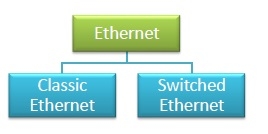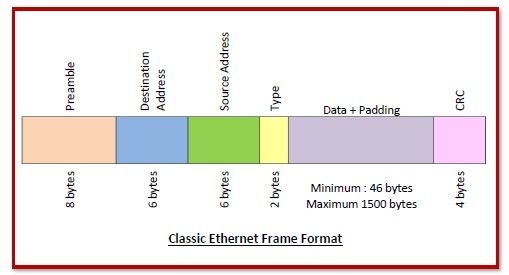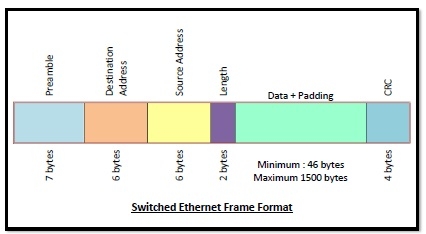
 Data Structure
Data Structure Networking
Networking RDBMS
RDBMS Operating System
Operating System Java
Java MS Excel
MS Excel iOS
iOS HTML
HTML CSS
CSS Android
Android Python
Python C Programming
C Programming C++
C++ C#
C# MongoDB
MongoDB MySQL
MySQL Javascript
Javascript PHP
PHP
- Selected Reading
- UPSC IAS Exams Notes
- Developer's Best Practices
- Questions and Answers
- Effective Resume Writing
- HR Interview Questions
- Computer Glossary
- Who is Who
Switched Ethernet vs. Classic Ethernet
Ethernet is a set of technologies and protocols that are used primarily in LANs. It was first standardized in 1980s as IEEE 802.3 standard.
Ethernet can be broadly classified into two types −

What are classic Ethernet and switched Ethernet?
Classic Ethernet is the original form of Ethernet that provides data rates between 3 to 10 Mbps. The stations are connected by hubs that allow each station to communicate with every other station in the LAN. There are a number of varieties of classic Ethernet, commonly referred as 10BASE-X. Here, 10 is the maximum throughput, i.e. 10 Mbps, BASE denotes use of baseband transmission, and X is the type of medium used.
The common varieties of classic Ethernet are −
- Thick coax (10BASE-5)
- Thin coax (10BASE-2)
- Twisted pair (10BASE-T)
- Ethernet over Fiber (10BASE-F)
In switched Ethernet, the hub connecting the stations of the classic Ethernet is replaced by a switch. The switch connects the high-speed backplane bus to all the stations in the LAN. The switch-box contains a number of ports, typically within the range of 4 – 48. A station can be connected in the network by simply plugging a connector to any of the ports. Connections from a backbone Ethernet switch can go to computers, peripherals or other Ethernet switches and Ethernet hubs.
Architecture of classic Ethernet and switched Ethernet
Classic Ethernet is simplest form of Ethernet. It comprises of an Ethernet medium composed of a long piece of coaxial cable. Stations can be connected to the coaxial cable using a card called the network interface (NI). The NIs are responsible for receiving and transmitting data through the network. Repeaters are used to make end-to-end joins between cable segments as well as re-generate the signals if they weaken. When a station is ready to transmit, it places its frame in the cable. This arrangement is called the broadcast bus.
The configuration of classic Ethernet is illustrated as follows −

Frame Formats
The frames for transmission of both classic Ethernet and switched Ethernet are same except for one field. Both of them have seven fields. The difference between the two is that while classic Ethernet has a ‘Type’ field, switched Ethernet has ‘Length’ field. The fields are −
- Preamble: It is a 7 bytes starting field that provides alert and timing pulse for transmission.
- Destination Address: It is a 6 byte field containing physical address of destination stations.
- Source Address: It is a 6 byte field containing the physical address of the sending station.
- Type/Length: It a 2 bytes field. In classic Ethernet it is ‘Type’ field that instructs the receiver which process to give the frame to. In switched Ethernet, it is ‘Length’ field that stores the number of bytes in the data field.
- Data: This is a variable sized field carries the data from the upper layers. The maximum size of data field is 1500 bytes.
- Padding: This is added to the data to bring its length to the minimum requirement of 46 bytes.
- CRC: CRC stands for cyclic redundancy check. It contains the error detection information.



